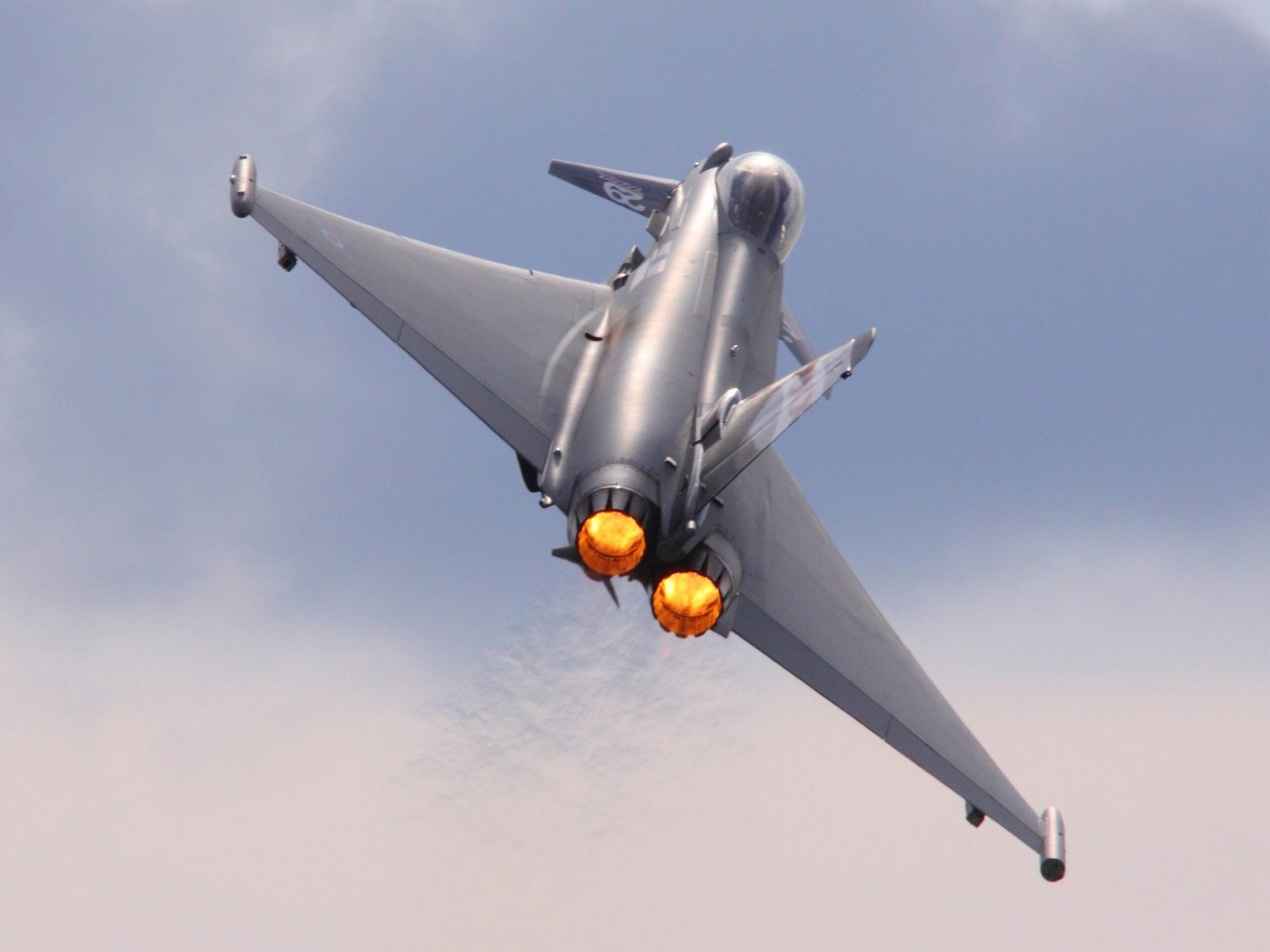Overview of 6th Generation Fighter Jets
6th generation fighter jets represent a significant leap forward in aerospace engineering, marking a new era of military aviation characterized by advanced technological innovations. Unlike their predecessors, these aircraft integrate state-of-the-art capabilities that enhance operational effectiveness and survivability in complex combat environments. One of the most notable features of 6th generation jets is their ability to incorporate artificial intelligence (AI) for improved decision-making, enhanced situational awareness, and more efficient mission planning. This integration of AI is paramount, as it allows for rapid data analysis and autonomous operations, thereby reducing the cognitive load on pilots.
Stealth technology is another critical aspect defining 6th generation fighter jets. These aircraft are designed with advanced materials and structural features that minimize their radar signature, making them more difficult to detect and target. This is essential for maintaining air superiority, as the ability to evade enemy defenses can drastically improve mission success rates. Additionally, the inclusion of unmanned capabilities signifies a shift in aerial combat strategy, enabling these fighter jets to operate in high-risk scenarios without putting pilots in harm’s way.
The global race to develop these cutting-edge fighter jets has intensified, as nations recognize the importance of air dominance in modern military strategy. Aerospace companies worldwide are investing heavily in research and development to create these advanced machines. The United States, Russia, China, and several European nations are among the frontrunners, each aiming to achieve technological superiority through innovative designs and capabilities.
Incorporating advanced propulsion systems and enhanced weaponry further elevates the operational scope of 6th generation fighter jets. These advancements underscore the need for continuous evolution in air combat technology, heralding a transformative shift in how air forces approach warfare. With their multifaceted capabilities, these jets are poised to redefine military effectiveness and strategic posturing in the years to come.
Etherspace Aerospace Engineering’s Commitment to Innovation
Etherspace Aerospace Engineering stands at the forefront of technological advancement in military aviation, particularly in the realm of developing 6th generation fighter jets. The company’s mission is driven by a commitment to enhance national defense capabilities through innovative design and engineering. Etherspace integrates cutting-edge space technology and advanced aerospace engineering principles to push the boundaries of what modern fighter jets can achieve.
The vision of Etherspace encompasses not only excellence in engineering but also an unwavering dedication to sustainability and efficiency in aerospace designs. Their strategic goals include the development of next-generation fighter jets that prioritize advanced stealth features, enhanced speed, and superior maneuverability. This commitment is evident in their rigorous research and development (R&D) protocols which prioritize creativity and technical prowess.
Etherspace utilizes state-of-the-art facilities that support their research endeavors, including wind tunnels and simulation models, allowing aerospace engineers to conduct extensive testing of aerodynamic properties. The company boasts a diverse team of professionals, including aeronautical engineers, material scientists, and software developers, all dedicated to pushing the envelope in aerospace technology.
The collaborative spirit is also a key element in Etherspace’s strategy. The company actively engages with government entities and other leading aerospace organizations to maximize its research capabilities. These partnerships enable the infusion of varying perspectives and expertise, leading to breakthroughs in innovative aircraft design. By fostering relationships with influential stakeholders such as defense contractors and organizations specializing in cutting-edge technology, Etherspace ensures a multidisciplinary approach to developing advanced fighter jets.
Through these comprehensive initiatives, Etherspace Aerospace Engineering reinforces its commitment to innovation, defining a future where 6th generation fighter jets serve as pivotal assets for defense operations worldwide.
Integrating Artificial Intelligence in Aircraft Development
The implementation of artificial intelligence (AI) in the development of 6th generation fighter jets is a transformative trend shaping the future of aerospace engineering. At Etherspace, ongoing research projects harness AI to significantly enhance various aspects of aircraft design, testing, and operational capabilities. Notably, machine learning algorithms are being integrated for predictive maintenance, enabling aircraft systems to self-analyze and forecast potential failures before they occur. This proactive approach not only greatly improves the reliability and safety of fighter jets but also reduces downtime and maintenance costs, showcasing a vital application of AI in aerospace technology.
AI-driven avionics is another promising frontier being developed at Etherspace. Advanced systems equipped with AI can process vast amounts of data in real-time, leading to improved situational awareness during missions. The integration of AI allows for more effective navigation, targeting, and communication, enabling pilots to make informed decisions rapidly in complex combat scenarios. Moreover, decision-making algorithms are being tested for their ability to assess threats and recommend strategic maneuvers, which enhances the overall effectiveness of these advanced aircraft in challenging environments.
Recent breakthroughs at Etherspace reflect a commitment to pushing the boundaries of AI applications in aerospace engineering. One notable advancement involves the development of autonomous systems that can operate alongside human pilots, acting as tactical advisors or even assisting in mission execution. These technologies aim to extend the operational envelope of 6th generation fighter jets, ensuring they maintain superiority in both air-to-air and air-to-ground engagements. As Etherspace continues to invest in AI research, the potential impact on the performance and effectiveness of fighter jets is substantial, further solidifying the role of AI in shaping the future landscape of military aviation and space technology.
Future Prospects and Challenges Ahead
The landscape of 6th generation fighter jet development is rapidly evolving, characterized by a competitive atmosphere that presents both numerous prospects and significant challenges. Etherspace Aerospace Engineering is at the forefront of this evolution, aiming to spearhead advancements in aerospace engineering that redefine aerial combat. However, the company faces substantial technological hurdles that could cause delays in the realization of its ambitious projects. For instance, achieving the desired levels of stealth, speed, and advanced weaponry integration necessitates innovative solutions that might not yet be fully developed or tested.
Budgetary constraints also pose a critical challenge. The development of 6th generation fighter jets is a costly endeavor, often requiring substantial public and private funding. Fluctuating defense budgets and shifts in national priorities can hinder the progress of vital research and development initiatives. Moreover, as nations increasingly prioritize cutting-edge space technology and unmanned aerial vehicles, securing adequate investment in manned aircraft systems becomes increasingly difficult.
Regulatory issues represent another layer of complexity for Etherspace Aerospace Engineering. Obtaining the necessary approvals for testing new technologies and deploying them in military applications entails navigating a multifaceted bureaucratic landscape. Furthermore, international cooperation in the realm of aerospace technology may also influence the strategic development of these fighter jets. Geopolitical tensions and the potential for military escalation could lead to competing interests among allied countries, thereby affecting collaborative efforts and technology sharing.
Looking ahead, the integration of artificial intelligence and other groundbreaking innovations holds the promise of revolutionizing aerial combat. These advancements might enhance situational awareness, improve decision-making, and streamline operations, ultimately reshaping national security paradigms. As Etherspace Aerospace Engineering navigates the challenges of developing 6th generation fighter jets, its ability to adapt to the rapidly changing technological and geopolitical landscape will be key to achieving success.



